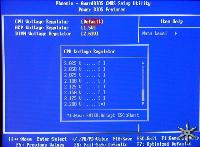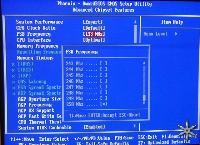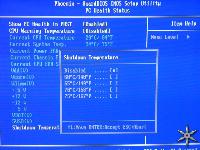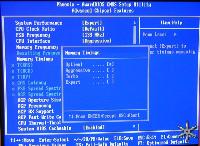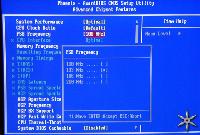After careful consideration I have decided to transfer all hardware review activities to a new domain. I purchased Hardwareasylum.com in 2012 and have been working hard to build a new and improved Ninjalane on that domain. If you are reading this you have reached one of the archived articles, news, projects and/or reviews that were left behind during the site migration.
Please update your bookmarks and be sure to visit the new and improved Ninjalane at Hardwareasylum.com
Epox EP-8RDA+ Motherboard Review
Author: Dennis Garcia
Published: Monday, March 24, 2003
BIOS Features
BIOS features
The Epox BIOS is actually very similar in layout and features to the one used on our Soltek board, I'm sure it's an nVidia reference design meaning that most nForce2 boards will have the same layout. Though Epox was nice enough to include some additional "features" making the board seem to be very overclocker friendly.
The Vcore maxes out at 2.2 volts for added processor stability. The rather high Vcore setting would require some pretty serious cooling to dissipate the increased heat but the option is there. The FSB is also selectable in 1Mhz increments from 100 to 250. The one feature missing from these menus is a VDD voltage adjustment that controls the chipset voltage. Modifications are available to manually set this voltage, though it would have been nice to see it in the bios.
This feature in the bios is very similar to Soltek's Anti-Burn Shield II technology which will turn the power off if the processor gets above one of the preset temperatures. It works best in situations like if your fan dies on the heatsink though in theory it should react fast enough to not allow you to power on the system without a heatsink attached. You are on your own if you decide to test it.
Most of the performance features are menu driven like this one where optimal is the default settings and expert allows you to select each item. For most of the benchmarks I used either optimal or expert to configure the bios. Aggressive and turbo are just preset variations based on the optimal values.
This last screenshot shows how Epox is preparing for the 400Mhz Athlon processors in their latest bios. The nForce2 Chipset is good to 200Mhz and above but the Epox seems to have a little trouble getting to that level and still remain stable, more on that later.
Enough with the features lets see some benchmarks.

